
Roots
To awaken each morning with the grace of unburdened coils, to find one’s strands retaining their inherent vibrancy rather than succumbing to the night’s unnoticed friction, is a dream shared by many who carry the legacy of textured hair. This desire, seemingly simple, holds within its quiet practice a profound resonance, an echo from ancestral lands where hair was always more than mere adornment. It is a fundamental truth that the unique architecture of textured hair necessitates particular care, a wisdom understood intuitively long before microscopes revealed the helical complexities of each strand.
Our textured hair, with its elliptical shaft and characteristic twists, naturally offers fewer smooth pathways for the scalp’s anointing oils to descend. This inherent structural difference renders it more prone to dryness compared to straighter hair types, a biological reality that has guided generations of care practices.
The practice of covering textured hair for sleep is an enduring act of self-preservation, reflecting deep understanding of its biological needs and a rich cultural heritage.
In the ancient world, before the widespread availability of modern fabrics, communities across Africa developed ingenious methods to protect and maintain their hair. These practices, rooted in a deep understanding of natural elements and human ingenuity, laid the groundwork for what we recognize today as essential nighttime hair care. Head coverings, crafted from readily available materials, served multiple purposes.
They guarded against the sun’s harsh rays, shielded hair from dust and environmental wear during daily tasks, and, crucially, offered a sanctuary for coils during periods of rest. The wisdom of these early traditions stemmed from observation ❉ how exposure dried hair, how friction created tangles, and how careful wrapping preserved the beauty painstakingly cultivated during daylight hours.
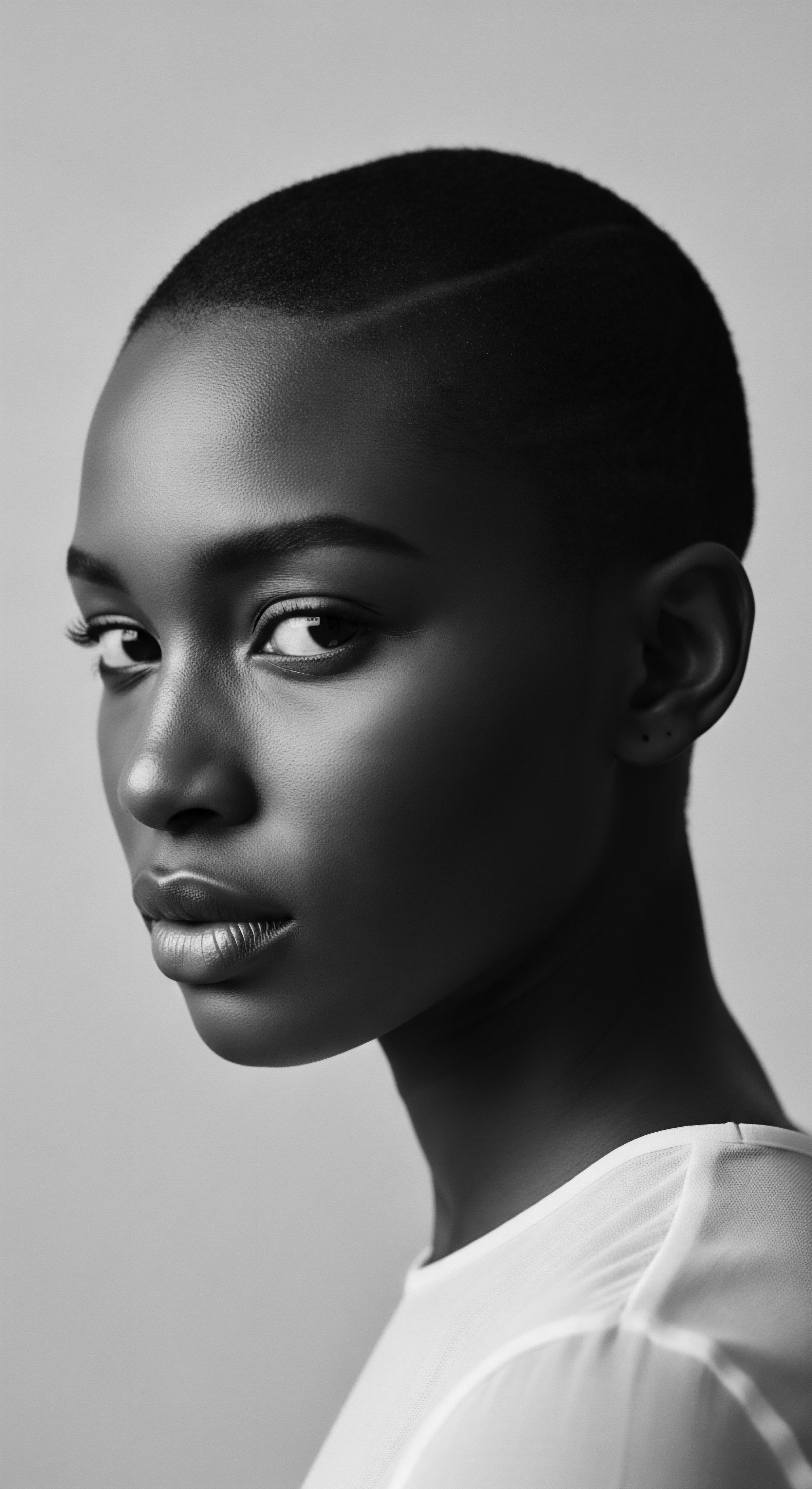
Ancient Guardians of the Strand
The very anatomy of textured hair, characterized by its distinctive curl patterns ranging from loose waves to tight coils, means that each bend in the strand presents a point of vulnerability. These natural formations, while lending magnificent volume and character, also create opportunities for breakage when subjected to consistent rubbing against rough surfaces. Early civilizations, without the vocabulary of modern trichology, intuitively grasped this fragility. They understood that retaining the hair’s natural moisture, its precious gift, was paramount.
The act of covering the hair for sleep became a simple, yet potent, solution to mitigate moisture loss. The body’s warmth, held close by a natural fiber covering, helped to keep the scalp’s oils within the hair’s embrace, rather than allowing them to dissipate into the night air or be absorbed by coarse sleeping surfaces.

How Did Ancestral Wisdom Perceive Hair Anatomy?
Across various African societies, hair was regarded as an extension of one’s identity, a spiritual antenna that connected individuals to their ancestors and the divine. This reverence meant that hair care practices were rarely purely utilitarian. They were imbued with spiritual significance, communal ritual, and a deep respect for the physical self.
The care bestowed upon one’s hair reflected an individual’s commitment to their well-being and their connection to a larger collective. Hair classifications, often unspoken, were recognized through shared understanding of how different textures responded to various natural ingredients and wrapping techniques.
- Shea Butter ❉ Widely used in West Africa, its rich emollients provided profound moisture and a protective barrier against environmental stressors.
- Baobab Oil ❉ Extracted from the majestic tree, this oil offered nourishment, helping to seal the hair’s cuticle and preserve its softness.
- Red Clay Mixtures ❉ Certain tribes, like the Himba of Namibia, blended red ochre with animal fat, not only for ceremonial adornment but also as a form of protection against sun and dryness.
These applications, combined with mindful wrapping, formed a holistic system of care. The concept of hair growth cycles, though not scientifically documented as we do today, was understood through the rhythmic patterns of seasonal changes and the natural shedding and regrowth observed over a lifetime. This ancestral understanding shaped daily practices, ensuring hair was always treated with foresight and tenderness, setting the stage for future generations.
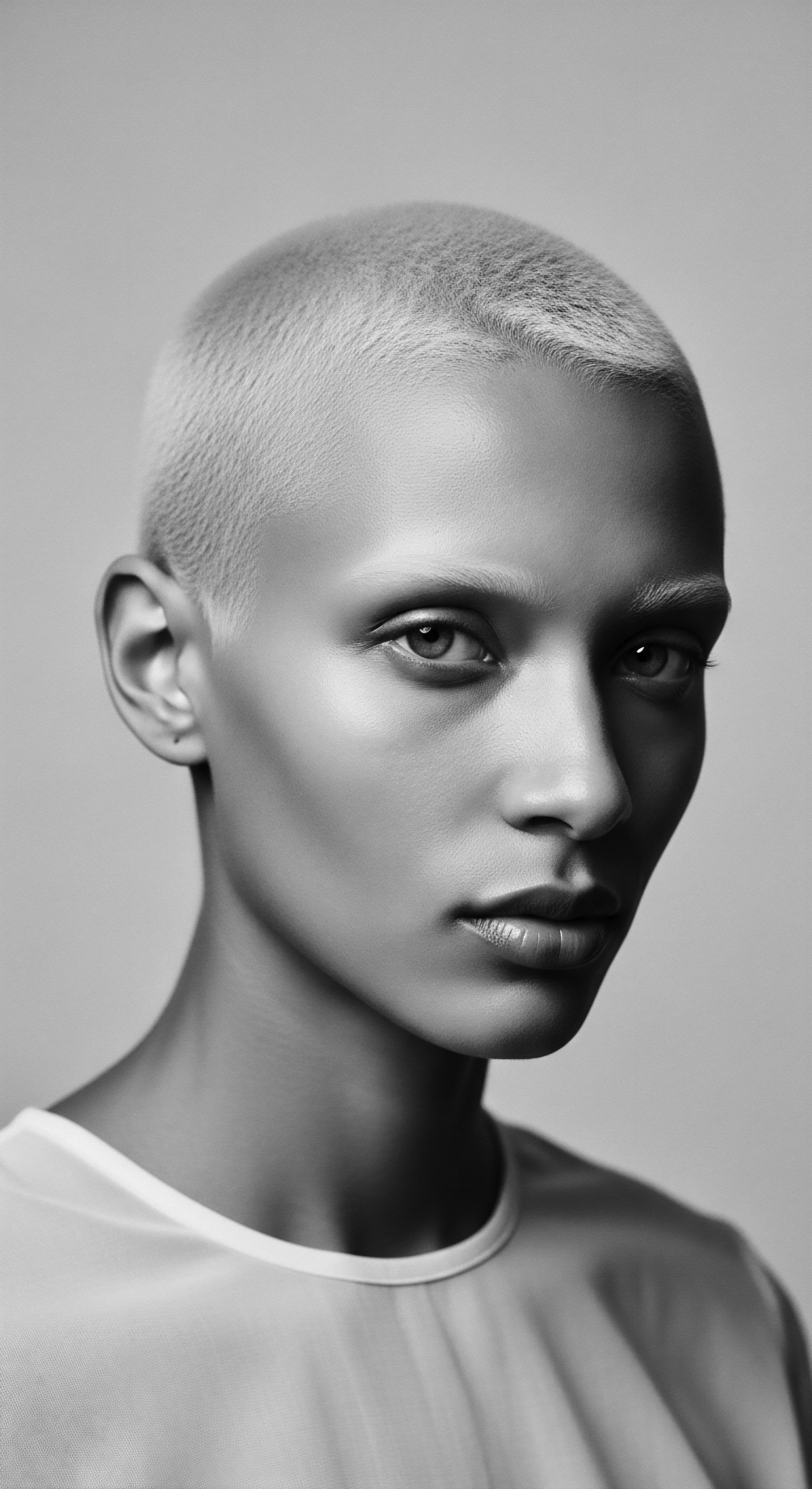
Ritual
The gentle act of preparing hair for sleep, often involving a thoughtful wrapping, transcends mere personal grooming; it is a ritual steeped in the collective memory of textured hair heritage. This nightly practice, for many, is a quiet conversation with generations past, a continuity of care passed down through mothers, aunties, and grandmothers. What began as an instinctive need for protection in ancestral lands took on layers of profound meaning through the crucible of history, particularly during periods of intense cultural oppression.
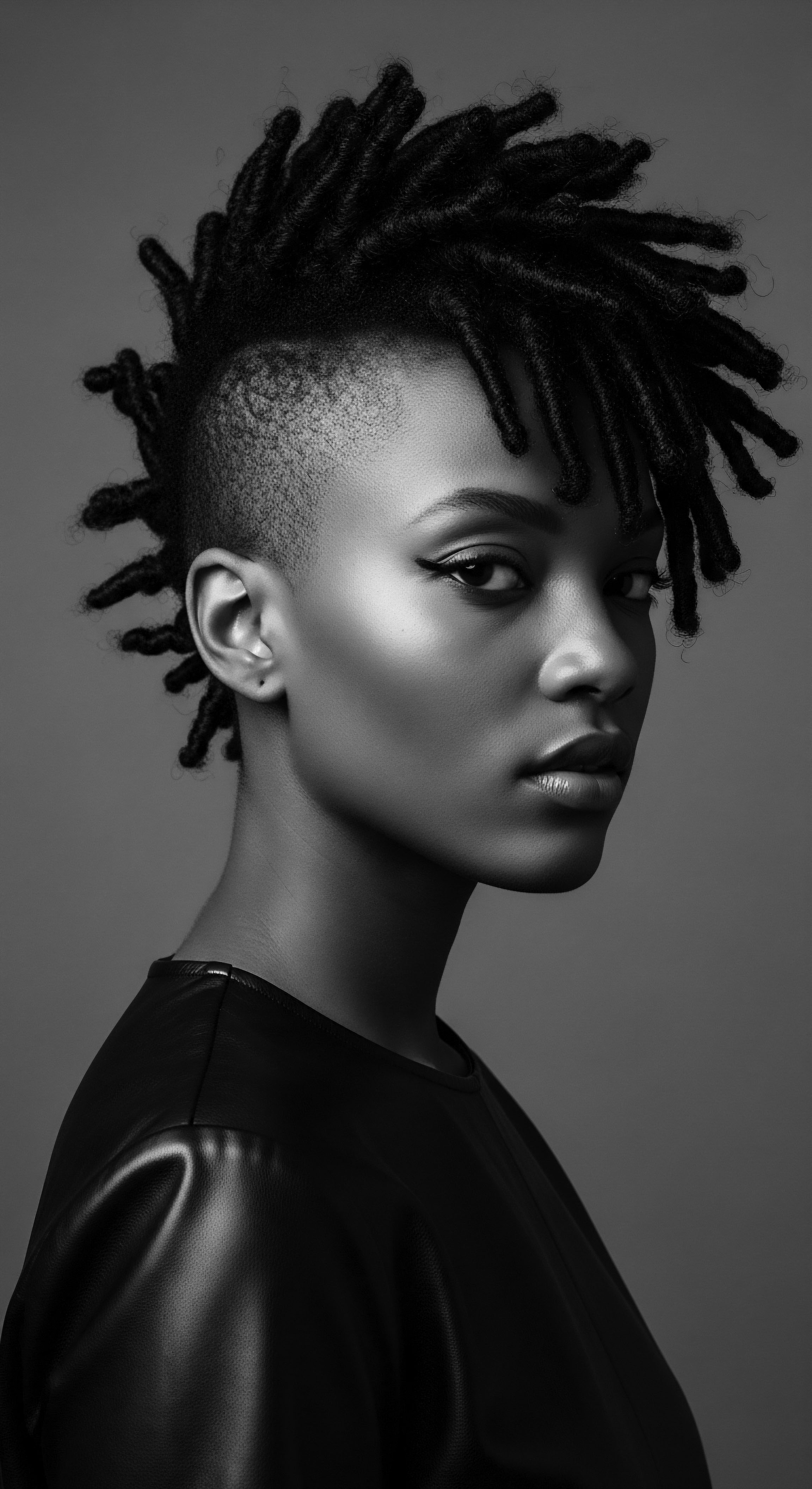
Protecting the Strand During Oppression
During the transatlantic slave trade and the ensuing eras of enslavement in the Americas, hair became a contested terrain. Enslaved African women, stripped of so much, clung to their hair practices as a vital link to their identity and heritage. Laws, like the infamous Tignon laws of 18th-century Louisiana, mandated that Black women cover their hair, intending to signify their inferior status.
Yet, in an astonishing act of resilience, these women transformed the forced head coverings into statements of dignity, expressions of cultural pride, and even tools for communication. The simple headwrap became a symbol of defiance, a way to maintain self-worth and communal bonds in the face of dehumanization.
Head coverings, initially enforced symbols of subjugation during enslavement, were transformed into powerful emblems of cultural resistance and self-dignity.
This historical backdrop firmly anchors the modern practice of covering textured hair for sleep within a continuum of survival and self-preservation. Even after the abolition of slavery, the stigma associated with headwraps persisted for a time, yet Black women continued to wrap their hair, especially at home, to preserve styles and health. This quiet, domestic act of care became a hidden act of rebellion, a refusal to abandon practices that served their hair and their spirit. The durability of hairstyles, achieved through careful wrapping, reduced the need for frequent manipulation, thereby minimizing damage—a practical benefit deeply understood by those with limited resources and time.
The physical benefits of covering hair for sleep, particularly with materials like silk or satin, are now scientifically understood, mirroring the intuitive wisdom of our forebears. Textured hair, with its natural bends and coils, is prone to tangles and frizz when agitated. The friction generated by tossing and turning on cotton pillowcases can lead to breakage and moisture loss. Cotton, a highly absorbent fiber, draws essential oils and moisture from the hair, leaving it dry and brittle.
Silk and satin, by contrast, possess a smooth surface that reduces friction, allowing hair to glide without snagging. This material choice helps retain the hair’s natural moisture, extending the life of hairstyles and promoting overall hair health.
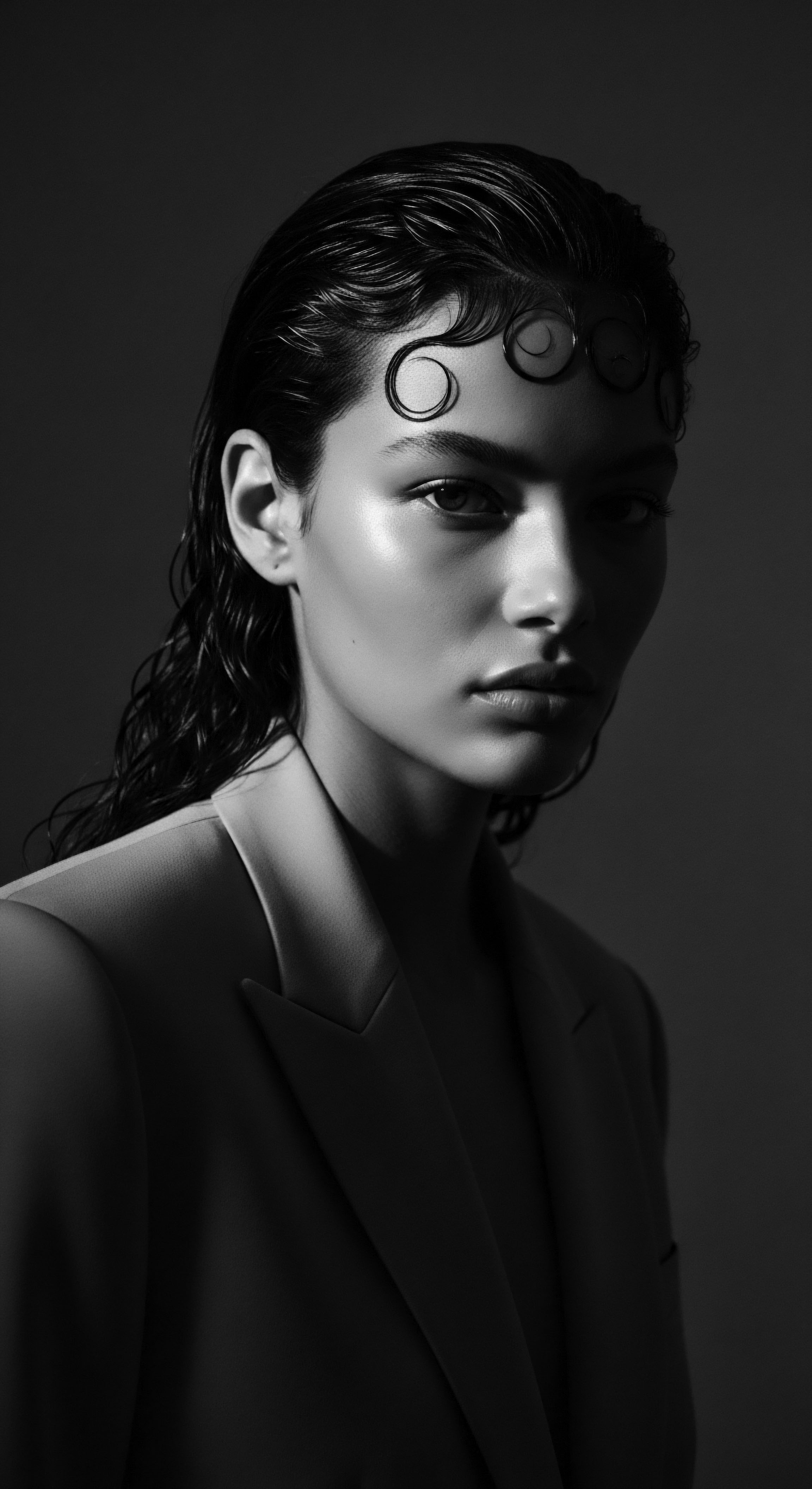
Why Does Material Choice Matter for Nighttime Hair Protection?
The choice of material for nighttime hair protection is not merely a modern preference; it is a testament to an evolving understanding of hair’s needs. While historical coverings might have used various fabrics, the modern preference for silk and satin aligns with the inherent properties of textured hair. These smooth fabrics honor the hair’s delicate structure, providing a gentle cocoon for the strands.
| Historical Practices Headwraps crafted from natural fibers like cotton, linen, or specific patterned cloths to protect hair from dust and sun, worn day and night. |
| Modern Applications Silk or satin bonnets, scarves, and pillowcases specifically designed to minimize friction and moisture absorption during sleep. |
| Historical Practices Intricate braiding and twisting as protective styles, often secured for sleep to maintain their form and longevity. |
| Modern Applications Pineapple method (loose high ponytail) and other gentle updos underneath coverings to preserve curls and waves. |
| Historical Practices The evolution of hair coverings reflects a continuous dedication to preserving textured hair, adapting ancestral wisdom for contemporary life. |
The ritual of wrapping hair at night also serves as a poignant act of self-care, a quiet moment of attention before entering the realm of dreams. For many Black women, this practice is a childhood memory, a soothing routine passed down from caregivers who understood the necessity of this protective measure. It is a moment to affirm self-love, to connect with a lineage of care, and to prepare the hair for another day, minimizing manipulation and potential damage upon waking. This nightly regimen, far from being a chore, becomes a moment of mindfulness, a brief respite where ancestral wisdom meets modern wellness, nurturing both the physical strands and the spirit.

Relay
The journey of covering textured hair for sleep, from its practical origins in West African communities to its current global recognition, is a living testament to resilience and cultural continuity. This practice, often seen simply as a beauty regimen, holds within it profound layers of cultural meaning, scientific validation, and a powerful narrative of identity. The relay of this wisdom across generations underscores not only its efficacy but also its deep grounding in the Black and mixed-race experience.
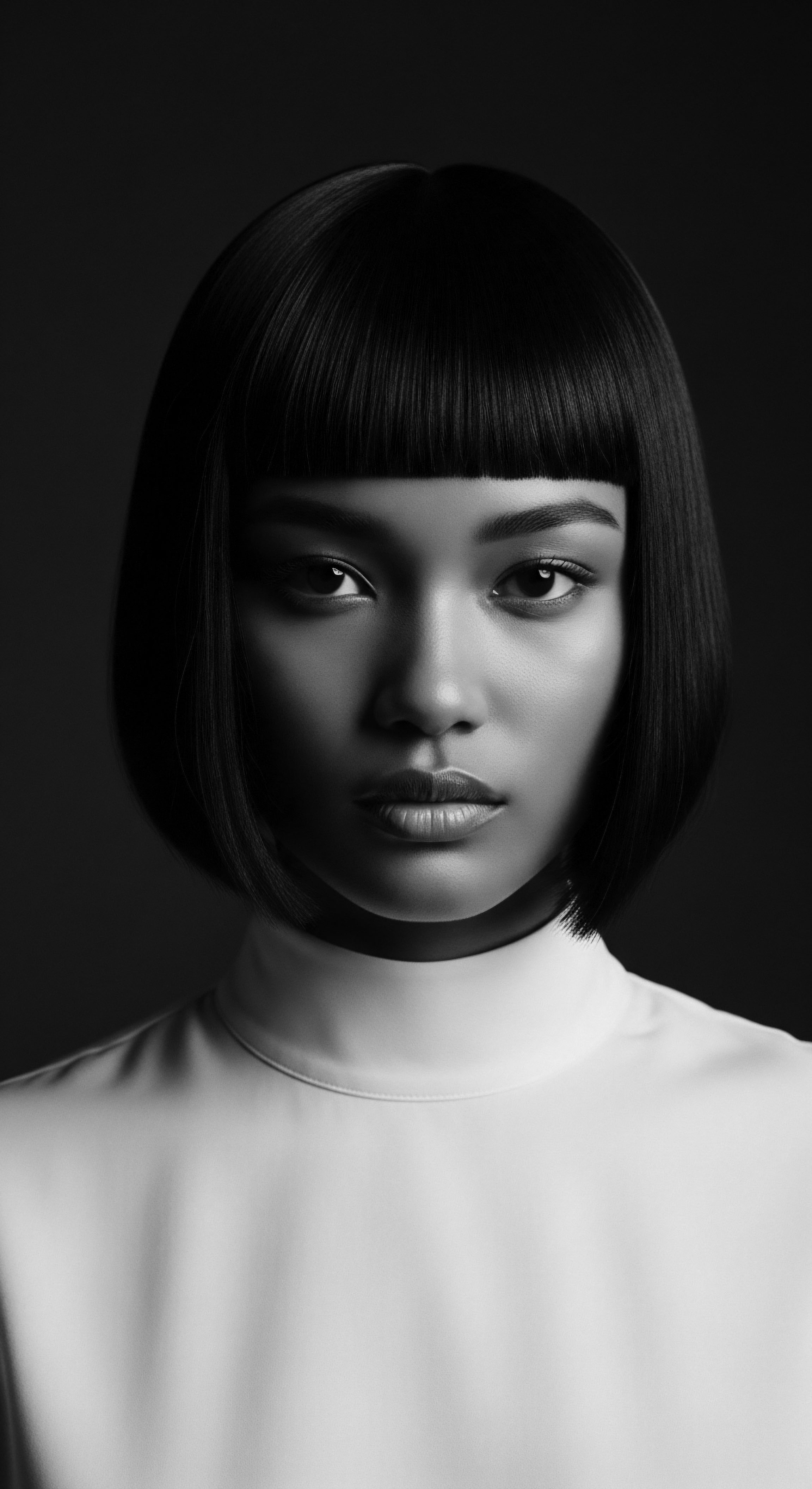
How Does Modern Science Validate Ancestral Nighttime Care?
Contemporary understanding of hair science now clearly articulates the biological imperatives that ancestral practices intuitively addressed. Textured hair, particularly those with tighter curl patterns, possesses an inherent susceptibility to dryness and breakage. The elliptical shape of the hair shaft and the numerous points of curvature mean that the natural oils produced by the scalp, sebum, struggle to travel down the entire length of the strand. This makes external moisture application and retention paramount.
When textured hair rubs against common pillowcases, such as those made of cotton, two primary challenges arise. First, cotton fibers are absorbent, acting like tiny sponges that wick away the hair’s precious moisture and natural oils throughout the night. This depletion exacerbates the hair’s natural dryness.
Second, cotton’s rougher texture creates significant friction as one shifts during sleep. This constant rubbing can lead to the lifting of the hair’s cuticle, resulting in frizz, tangles, and ultimately, breakage.
The solution, now championed by trichologists and hair care experts, mirrors the preferred materials for centuries ❉ smooth, non-absorbent fabrics. Satin and silk bonnets, scarves, or pillowcases provide a frictionless surface that allows hair to glide freely, preserving its delicate cuticle layer. This dramatically reduces mechanical stress, minimizing tangles and breakage. Furthermore, these materials do not absorb moisture from the hair, allowing products applied before bed—like oils, creams, or leave-in conditioners—to remain on the strands, working their restorative magic overnight.
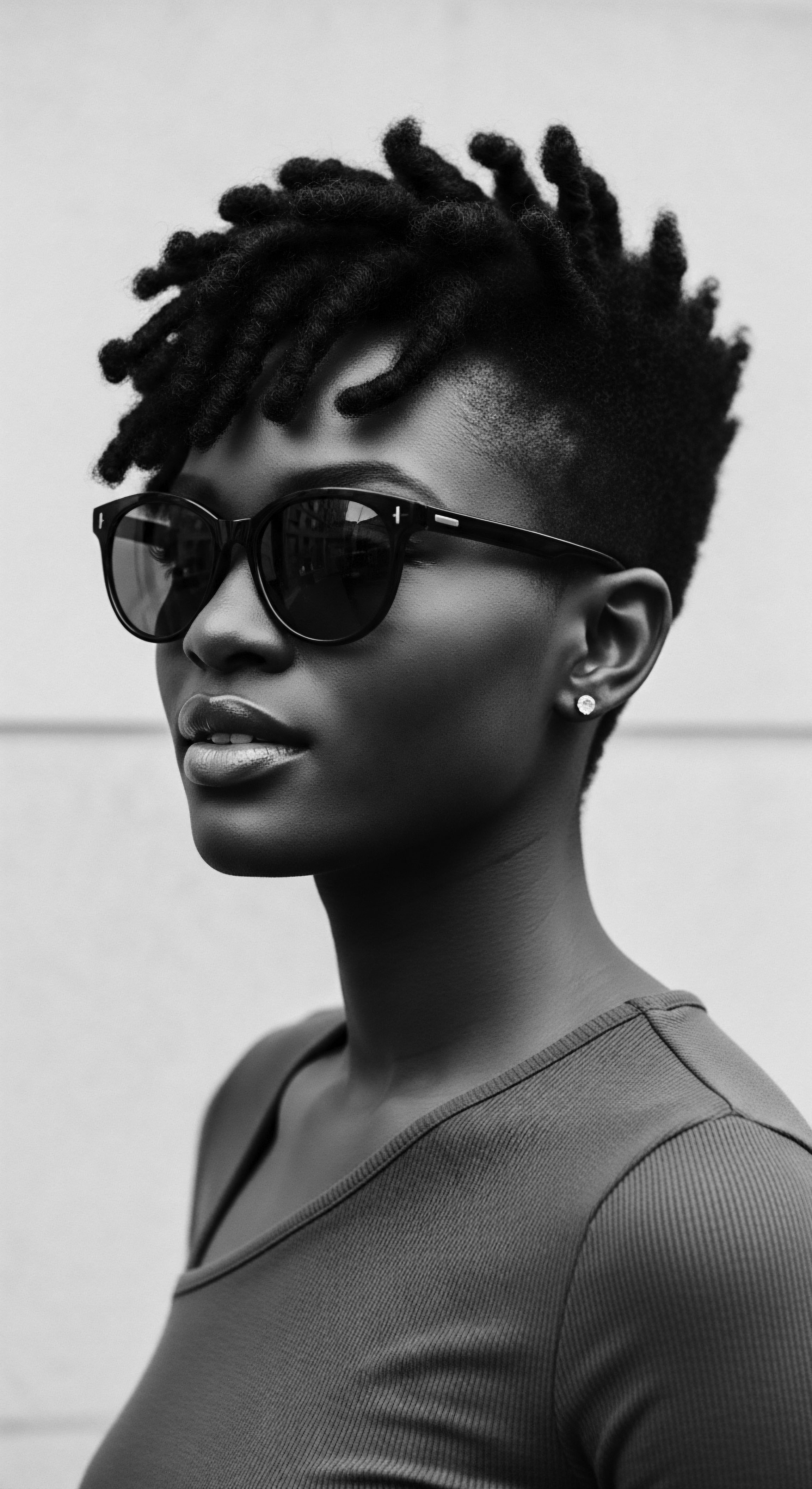
How Did Headwraps Resist Erasure of Cultural Identity?
A powerful historical instance of this protective practice evolving into a symbol of resistance is found in the experiences of enslaved women in the American South. During this period, head coverings, often mandated by oppressive laws to visually mark subjugation, became a clandestine form of communication and a bold assertion of selfhood. In places like Suriname, enslaved women reportedly used the way they tied their headwraps to send coded messages to one another, entirely unknown to their captors.
(Griebel, 1995) This act transformed a tool of oppression into an instrument of survival, a silent language spoken through fabric and folds. It stands as a profound example of how cultural practices, even under extreme duress, can be re-purposed to preserve identity and foster communal resilience.
The reclamation of the headwrap and bonnet in modern times stands as a powerful symbol of self-love and pride. From the 1970s onwards, as movements for Black liberation and natural hair gained momentum, these coverings shed their historical baggage of perceived subservience and became celebrated symbols of cultural affirmation. Artists and advocates, recognizing the deep historical roots and practical benefits, brought headwraps into public view, transforming them into fashion statements and markers of conscious cultural connection.
- Moisture Preservation ❉ Smooth fabrics like silk and satin prevent cotton pillowcases from drawing moisture from textured hair, helping strands remain hydrated.
- Friction Reduction ❉ The slick surface minimizes rubbing, preventing tangles, frizz, and breakage that can disrupt curl patterns and lead to hair damage.
- Style Longevity ❉ Protecting hair overnight extends the life of hairstyles—whether braids, twists, or straightened looks—reducing the need for frequent manipulation.
The practice of covering textured hair for sleep is not a trend; it is a timeless legacy. It is a continuation of practices born from necessity, forged in resilience, and validated by science. It is an act of care that honors the unique biology of textured hair, the enduring spirit of Black and mixed-race communities, and the ancestral wisdom that has always understood hair as a sacred extension of self. Each night, as a head is gently wrapped, a quiet homage is paid to generations of care, a continuous relay of knowledge and love for the strand.
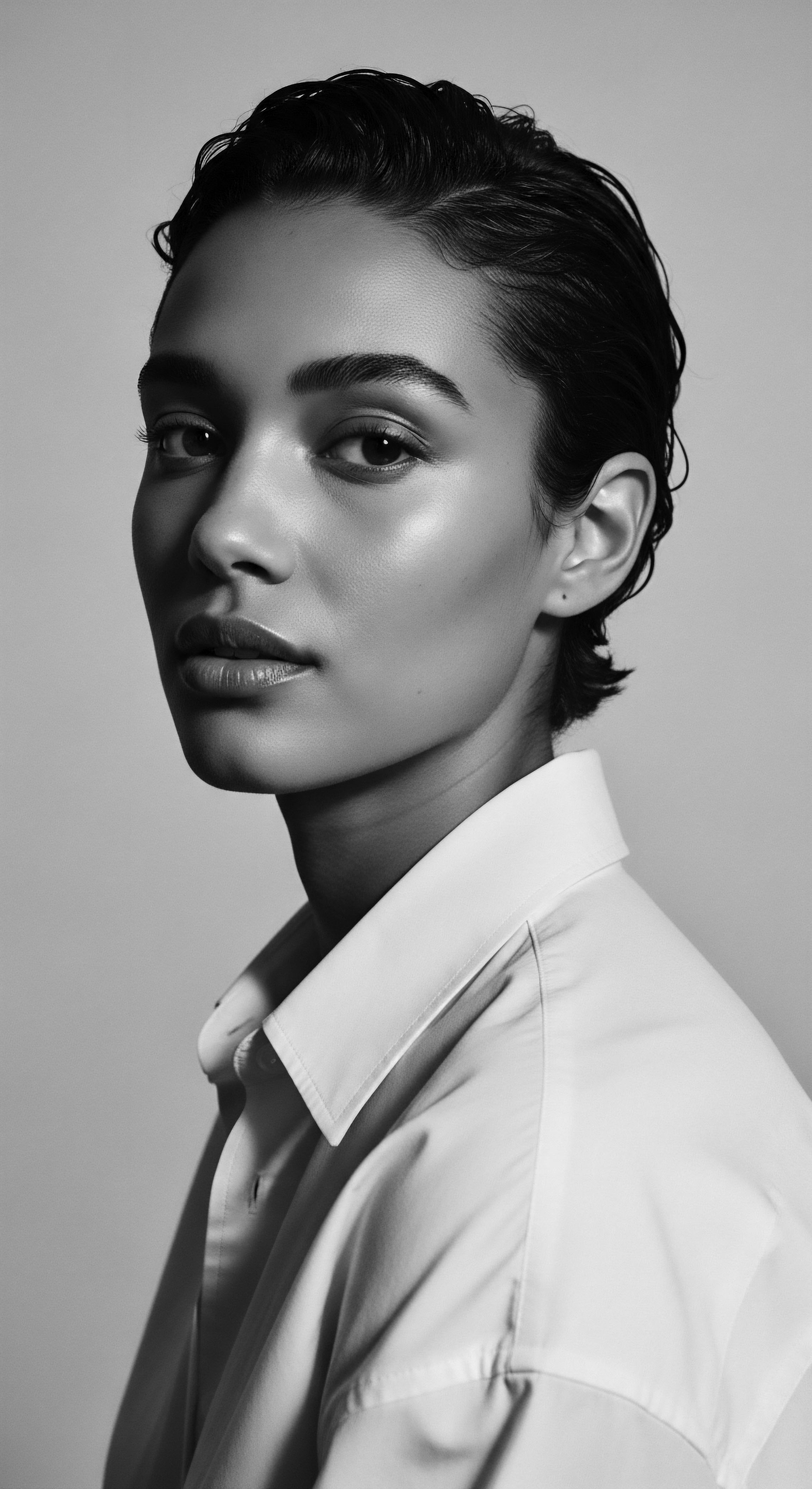
Reflection
The ritual of covering textured hair for sleep, deeply woven into the fabric of Black and mixed-race heritage, stands as a testament to enduring wisdom and unwavering self-regard. It is a practice that transcends mere functional necessity, evolving into a profound act of honoring one’s lineage and sustaining the innate strength and beauty of the strand. This daily commitment, born from the earliest observations of hair’s delicate nature and honed through centuries of resilience, encapsulates the essence of Roothea’s ‘Soul of a Strand’ philosophy ❉ a living, breathing archive of care, community, and identity.
To protect one’s hair at night is to acknowledge a continuity of knowledge stretching back to ancient African societies, where hair was revered as a conduit to spiritual realms and a marker of personal history. It is to recognize the ingenious adaptations made during periods of extreme adversity, transforming symbols of oppression into emblems of defiance and self-determination. In every silk bonnet donned, every scarf carefully tied, we witness a quiet yet powerful affirmation of cultural belonging and a commitment to holistic well-being that spans generations. The gentle whisper of fabric against coils each night is more than just a sound; it is the rustle of ancestral leaves, a promise of vitality renewed.

References
- Byrd, A. D. & Tharp, L. L. (2001). Hair Story ❉ Untangling the Roots of Black Hair in America. St. Martin’s Press.
- Griebel, H. B. (1995). The African American Woman’s Headwrap ❉ Unwinding the Symbols. (Unpublished paper, Cornell University).
- Johnson, D. A. (2021, September 3). How a Hair Wrap Routine Protects More Than Just My Hair. Sleep.com.
- Katsande, R. (2015, January 25). The history & meaning of head wraps across Africa. Wilderness Safaris.
- Obé Headwear. (2024, August 5). Significance of headwraps. Obé Headwear.
- Oyedemi, T. (2016). ‘Beautiful’ hair and the cultural violence of identity erasure. Communicatio ❉ South African Journal for Communication Theory and Research, 42(4), 519-536.
- Safenya, K. (2021, March 4). Effective Afro Hair Care Routines. pan-African.
- Thomas, S. J. (2023, June 26). Unveiling the History of the Hair Bonnet for Black Women. Hype Hair.
- Wallace, E. L. & Khumalo, N. P. (2015). Contemporary African-American Hair Care Practices. Journal of Clinical and Aesthetic Dermatology, 8(5), 23–25.
- Walton, J. R. et al. (2025, March 4). Historical Perspectives on Hair Care and Common Styling Practices in Black Women. Dermatologic Clinics.
